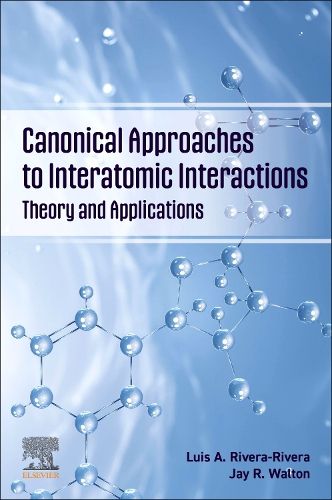Readings Newsletter
Become a Readings Member to make your shopping experience even easier.
Sign in or sign up for free!
You’re not far away from qualifying for FREE standard shipping within Australia
You’ve qualified for FREE standard shipping within Australia
The cart is loading…






Typical pathways for modelling interatomic interactions involve the plotting of potential energy against radial displacement, but such approaches can be computationally costly. Canonical Approaches to Interatomic Interactions: Theory and Applications provides an overview of the field and presents a replicable, novel force-based approach that demonstrates accurate and quantitative interrelations between weakly bound and strong covalently bound intermolecular interactions.
Beginning with an introduction to Potential Energy Surfaces (PES) and modern approaches in Part 1, Part 2 goes on to describe Canonical Approaches in detail, including methodologies and data to allow replication. Part 3 then goes on to outline some key applications, before future directions are discussed in Part 4.
Sharing the insight of its progressive authors, Canonical Approaches to Interatomic Interactions: Theory and Applications is an informative guide for all those working with interatomic interactions and PES, including researchers in in chemical kinetics and bonding, molecular mechanics, quantum chemistry and molecular modelling.
$9.00 standard shipping within Australia
FREE standard shipping within Australia for orders over $100.00
Express & International shipping calculated at checkout
Typical pathways for modelling interatomic interactions involve the plotting of potential energy against radial displacement, but such approaches can be computationally costly. Canonical Approaches to Interatomic Interactions: Theory and Applications provides an overview of the field and presents a replicable, novel force-based approach that demonstrates accurate and quantitative interrelations between weakly bound and strong covalently bound intermolecular interactions.
Beginning with an introduction to Potential Energy Surfaces (PES) and modern approaches in Part 1, Part 2 goes on to describe Canonical Approaches in detail, including methodologies and data to allow replication. Part 3 then goes on to outline some key applications, before future directions are discussed in Part 4.
Sharing the insight of its progressive authors, Canonical Approaches to Interatomic Interactions: Theory and Applications is an informative guide for all those working with interatomic interactions and PES, including researchers in in chemical kinetics and bonding, molecular mechanics, quantum chemistry and molecular modelling.